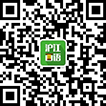07年考研英语阅读理解精读100篇unit47
Unit 47
Say this for the structure of the universe: it does tend to repeat itself. Stars orbit the pivot point at the center of galaxies, planets in turn orbit stars, and moons in turn orbit planets. Last week astronomers writing in the journal Nature announced that this cosmic reductionism goes even further. For the first time, ground-based telescopes spotted a tiny moonlet orbiting a mere asteroid in Earth's own solar system.
In most respects the asteroid that's causing the celestial stir is nothing remarkable. Known to astronomers as Eugenia, it measures about 133 miles across and is one of thousands of bits of cosmic flotsam in the great rubble stream between Mars and Jupiter. When an international team of astronomers working at the Canada-France-Hawaii Telescope (CFHT) on Mauna Kea in Hawaii turned their attention toward Eugenia one evening last fall, however, they spotted something curious. Off on the upper-left corner of the fuzzy-looking image was another smear of light they couldn't identify. "These blobs are often artifacts of the optics," says astronomer William Merline, head of the team, "but this blob hung around. Once we saw it was moving in a pattern consistent with an orbit, we knew it was a satellite."
The Hawaii discovery did not mark the first time a moonlet had been found around an asteroid. In 1993 the Galileo spacecraft sped past the 20-mile-wide asteroid Ida and spotted a scrap of moon just under a mile wide circling it. But the only way Galileo could detect the tiny target was to fly there across many millions of miles of space and do its exploring up close. Now, thanks to new optics in the CFHT, it's possible to search for moonlets from the comfortable perch of a faraway Earth.
Light streaming in from space tends to get distorted by the planet's atmosphere, causing a star's familiar twinkle. The CFHT, however, is equipped with optical hardware that lets it calibrate itself on the light from a known star--whose degree of atmospheric distortion will generally be predictable--and then use that information to correct the distortion of other, unknown bodies. A little fiddling with the incoming image and even the blurriest picture snaps right into focus.
Already the discovery of the moonlet is paying scientific dividends. By analyzing the orbit of the satellite, astronomers are drawing surprising inferences about the composition of Eugenia itself. Most asteroids are thought to be about three times as dense as water, but Eugenia is barely 20% denser, suggesting it either is made of loosely packed rubble or is rich in ordinary ice. Further analysis could help settle the question, and more discoveries of more moonlets could shed similar light on Eugenia's asteroid-belt sisters.
注(1):本文选自 Time,10/18/99, p83;
注(2):本文习题命题模仿对象2004年真题text 3;
1. By saying “it does tend to repeat itself”, the author means ___________.
[A] the structure of the universe always appears again and again
[B] the universe itself is liable to repeat
[C] the stars in the universe always orbit the pivot point at the center of the galaxies
[D] the structure of celestial bodies in the universe are really always similar
2. By “the fuzzy-looking image”,(Line 6,Paragraph 2)the author is actually referring
to______.
[A] Eugenia
[B] a artifact
[C] a satellite
[D] the orbit
3. How do people think of the new optics at the GFHT?
[A] comfortable
[B] helpful
[C] thankful
[D] faraway
4. Why can little fiddling with the incoming image and even the blurriest picture snap right
into focus?
[A] The optical hardware makes this possible.
[B] The stars’ twinkle helps a lot.
[C] The atmospheric distortion gives help.
[D] The information from unknown stars can be used.
5. Which of the following is true according to the passage?
[A] The discovery of moonlet is paying money now.
[B] More discoveries of more moonlets could give light to other similar asteroids.
[C] The Eugenia is not as dense as most asteroids.
[D] Eugenia is certainly made of small rubbles.
答案:D A B A C
篇章剖析
本篇主要通过对尤金尼亚小行星发现来龙去脉的叙述,介绍宇宙中的小行星和小卫星研究的意义。第一段介绍宇宙的结构和小行星在宇宙结构中的地位;第二段叙述了人们发现小行星尤金尼亚的过程;第三段讲述在发现龙金尼亚之前,伽利略号宇宙飞船曾发现小行星;第四段介绍夏威夷加法夏天文台观测小行星的设备;最后一段介绍了发现小卫星对科学发展的贡献。
词汇注释
pivot [5pivEt] n.枢轴, 支点,
galaxy [5^AlEksi] n.星系, 银河
Eugenia [ju:5dVi: njE] n.尤金尼亚 是一颗拥有卫星的小行星
asteroid [5AstErCid] n.[天文]小游星, 小行星
reductionism [ri5dQkFEnizm] n.简化论 简化论用相对简单的原理解释复杂现象或结构的
企图或趋势,这种理论认为生命过程或思维活动是遵循物理和化学法则的
celestial [si5lestjEl] adj.天体的
flotsam [5flCtsEm] n.浮货, 废料, 零碎物
CFHT 加法夏天文台
fuzzy [5fQzi] adj.模糊的, 失真的
optics [5Cptiks] n.光学
consistent [kEn5sIst(E)nt] adj.一贯的;始终如一的
calibrate [5kAlibreit] vt. 校准[正], 检查[验], 定标, 标定
distortion [dis5tC:FEn] n.扭曲, 变形
fiddling [5fIdlIN] adj.无足轻重的;无聊的;极小的
dividend [5dividend] n. 股息, 红利, 奖金, 年息
shed light on 使某事显得非常清楚
难句突破
1. Off on the upper-left corner of the fuzzy-looking image was another smear of light they
couldn't identify.
本句主体句式为:another smear of light was off on ….。这是一个倒装句,因为介词短语off on the upper-left corner of the fuzzy-looking image前置,系动词was提前,本句的意思:在这个模糊不清的影像的左上角的上面,看到了另外一片他们无法辨别的模糊的光团。
2. The CFHT, however, is equipped with optical hardware that lets it calibrate itself on the light from a known star--whose degree of atmospheric distortion will generally be predictable--and then use that information to correct the distortion of other, unknown bodies.
主体句式:The CFHT is equipped…
结构分析:这是一个复杂句,主句是The CFHT is equipped with optical hardware;that 引导的是optical hardware定语从句,而这一定语从句中又包含了另一个定语从句whose degree of atmospheric distortion will generally be predictable和一个并列句-and then use that information to correct the distortion of other, unknown bodies.
句子译文:然而,加法夏天文台配备了一组光学设备可以帮助它对准来自已知恒星的光团,(已知恒星的大气折射一般是可以预测的),然后再利用这一信息,来校正一些未知星球的折射。
题目分析
1. 答案是D,属推理判断题。文中先谈的就是宇宙结构,后面又说到恒星围绕着银河的
轴心旋转,行星反而围绕着恒星转,卫星围绕着行星转动, 可见,天体的结构是相似的。
2. 答案是A,属推理判断题。文中讲到,去年秋天的一个晚上,当他们开始关注尤金尼亚
时,发现了一些奇妙的东西。在这个模糊不清影像右上角的上面,看到了另外一片他们无法辨别的模糊的光团。故这个影像就是指尤金尼亚。
3. 答案是B,属推理判断题。文中讲到,多亏了CFHT的新的光学仪器,人们才可以在
这个距离太空很远的地球上,找一个舒适的地方来研究小行星了。所以说这个仪器是有帮助的。
4. 答案是A,属推理判断题,因为有了光学仪器,才有可能对准已知的恒星的光,而已
知恒星的大气折射一般是可以预测的,所以人们再利用这一信息,来校正一些未知星球的折射。这样一个极小的刚进入视野的影像,甚至最模糊的画面也被拍摄得很清晰了。所以说,这一切都是因为有了光学仪器。
5. 答案是C,属细节判断题。 主要是对第五段中几个句子的理解。参考译文很容易找到
答案。
参考译文:
有人这样形容宇宙的结构:它的确往往自我重复。恒星围绕着星系轴心转,行星围绕着恒星转,卫星围绕着行星转。上个星期,天文学家在《自然》杂志上宣称,宇宙简化论将进一步扩展。地面上的天文望远镜首次观察到的地球本身所在的太阳系中,一颗小卫星正围绕着一个小行星旋转。
在很多时候,引起太空变化的小行星并没有引起人们的关注。天文学家所熟知的尤金尼亚,直径大约为133英里,是火星与土星之间巨大碎石流中数千颗宇宙碎片中的一块。去年秋天的一个晚上,在夏威夷昌纳开亚山加法夏天文台工作的国际天文学家们把目光投向尤金尼亚时,他们发现了一些奇妙的东西。在这个模糊影像右上角的上面,看到了另外一片他们无法辨别的模糊的光团。队长威廉·莫林说:一般来说光团光学现象,但这个光团却并没有散开。有一次,我们发现它是在沿着一个轨道连续不断的移动,我们才知道这是颗卫星。
在夏威夷的这次发现并不是首次记录小行星周围出现小卫星。在1993年,伽利略号宇宙飞船快速通过20英里宽的爱达小行星时,发现一块像月亮般发光的物体正在一英里远的地方围绕着它旋转。当时,伽利略号探测这个微小物体的唯一途径,就是飞越茫茫太空靠近它来观察。现在,依靠加法夏天文台新的光学仪器,人们可以在这个距离太空很远的地球上,在一个舒适的地方来研究小行星了。
来自太空的光流很容易被恒星周围的大气所折射,这就导致了我们所熟悉的星星的闪烁。然而,加法夏天文台配备了一组光学设备可以帮助它对准来自已知恒星的光团,(已知恒星的大气折射一般是可以预测的),然后再利用这一信息,来校正一些未知星球的折射。一个极小的刚进入视野的影像,甚至最模糊的画面也被拍摄得很清晰。
猜你喜欢
-
来日留学不可不知的十大APP
小编根据自己的留学生活经验给大家推荐以下十款必备的App,几乎涵盖生活的方方面面,无论你是找兼职还是要网购,是阅览资讯还是观看视频,都能提供极大便利。
-
出国留学中介前十名介绍 沪江是最好的选择
想要出国留学却没有时间没有精力去办理出国留学的手续,这个时候寻找一个好的出国留学中介就成了最好的办法,好的中介可以让自己更合理的去挑选自己喜欢的国家和学校,而且中介还有出国培训相关的内容,这...
-
日本动漫游戏:学校的圣域
feng社第9作第1弹《彼女のセイイキ(她的圣域)》,而系列的第2弹《妹的圣域》已于2015年08月28日发售,系列第3弹《学校的圣域》在2016年11月发售。
-
日本惊悚恐怖电影《裸体之夜:掠夺狂爱》
《裸体之夜2:掠夺狂爱》是由石井隆执导,竹中直人、佐藤宽子等领衔主演日本惊悚情色电影。该片讲述了主人公红次郎替年轻女孩加藤怜寻找叫“多绘”的救命恩人,结果踏入充满危机的“粉红”漩涡中。
-
秒变单身狗:哪些话不能对恋人说
恋爱初期总是美好而甜蜜的,然而两人长期处下来,就会发现对方的不足之处。生气起来口不择言,结果深深的伤害到两人的感情。这期给大家介绍一些对恋人可不能说的一些话。
-
「こんにちわ」是个啥?你知道吗?
常逛日站或是和日本朋友聊天的小伙伴们肯定经常会听到一句:こんにちわ,从发音上我们可以猜出来是こんにちは,但是这个こんにちわ是怎么来的呢?他又是什么呢?下面就让沪江日语教研君来告诉你吧!
-
动漫日语脱口而出:痛痛飞走了
看动漫不学日语?那就太可惜啦!花花团小组节目《动漫日语每日一句》,每天教大家一句动漫中的实用台词,让你在看动漫的同时学到地道日语口语。爱动漫,爱生活!一起来练习口语吧!


